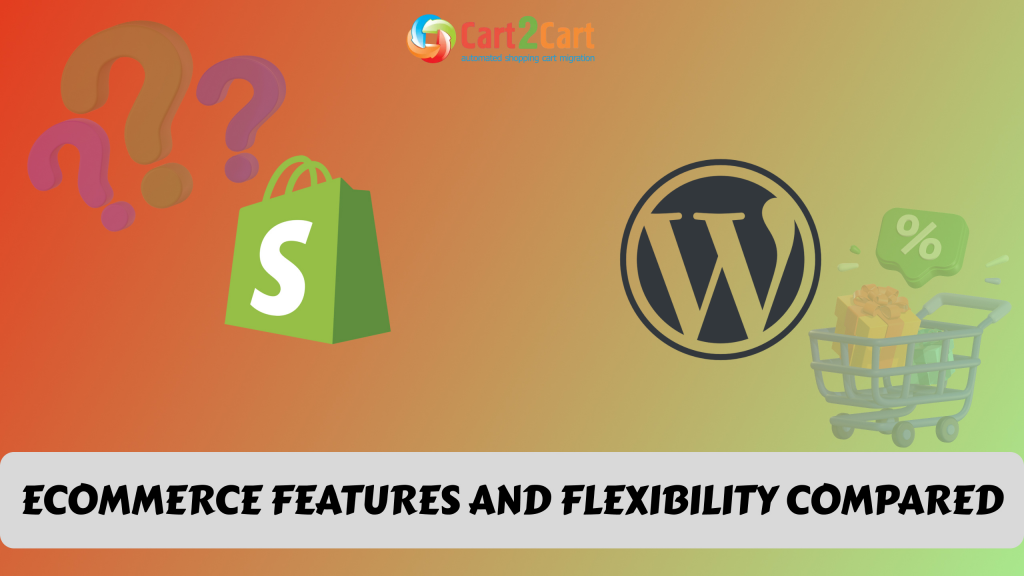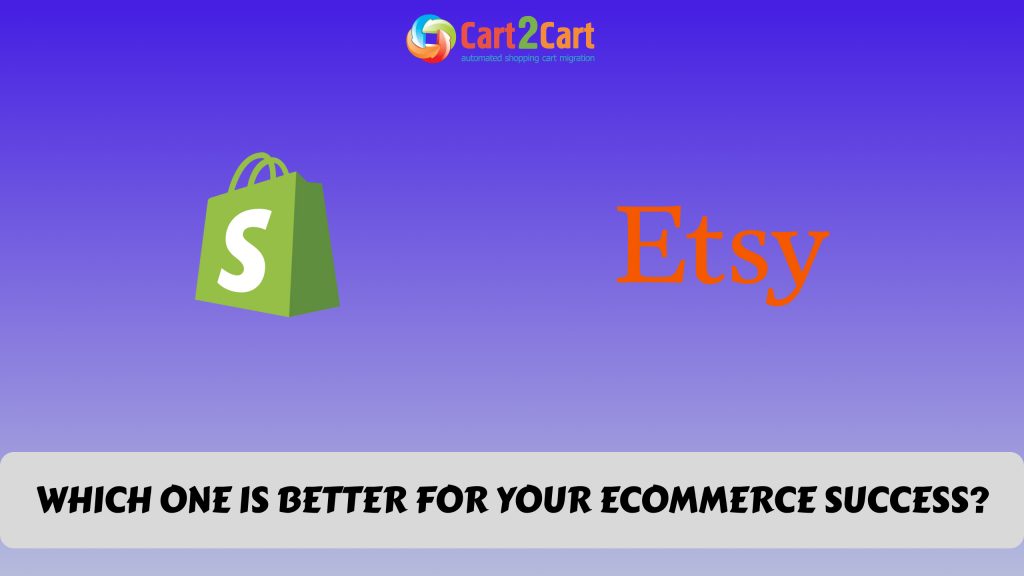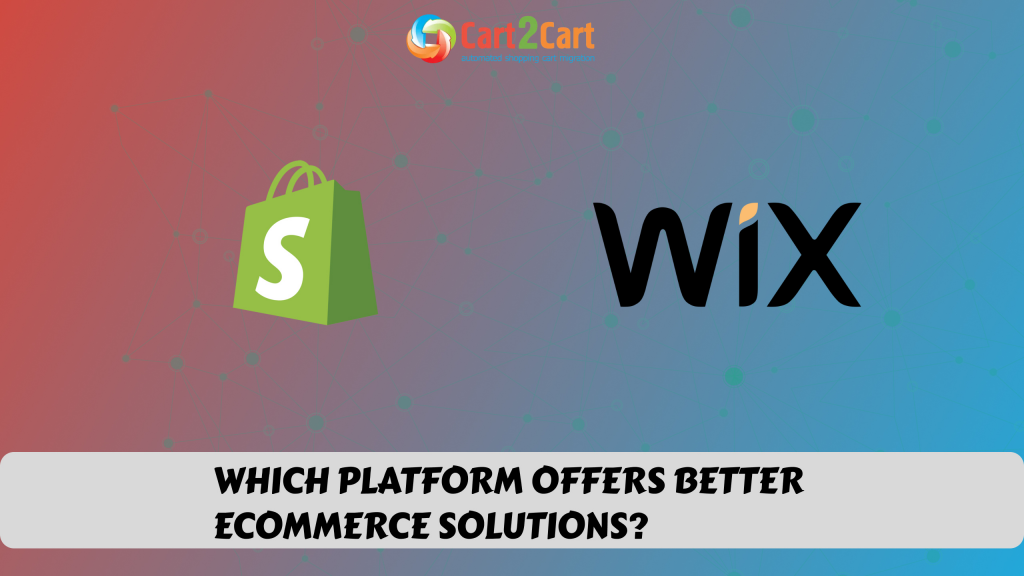Shopify Migration
Achieve a flawless Shopify Migration with Cart2Cart, the definitive solution to seamlessly migrate from Shopify without stress. We understand your concerns about data integrity, process complexity, and potential downtime. Our fully automated and incredibly secure platform guarantees zero downtime for your source store, ensuring continuous business operation while your new platform is meticulously prepared. Trusted by thousands of merchants for its unparalleled reliability and speed, Cart2Cart typically completes your comprehensive store transfer in just a few hours, expertly moving all your products, customers, orders, SEO URLs, and every essential data point with precision. Experience the safest, most efficient e-commerce migration available, backed by our proven expertise.
How to Migrate to Shopify
This step-by-step guide details how to securely migrate to Shopify from any other e-commerce platform using Cart2Cart, ensuring complete data integrity for your online storefront.
- Register and Initiate: Create a Cart2Cart account to begin your platform switch. This initial step is free and takes only a minute.
- Connect Your Source Store: Provide the credentials for your current platform to allow secure API access for the data transfer.
- Connect Shopify Target Store: Install the Cart2Cart Store Migration App from the Shopify App Store. This app provides the necessary API access to securely link your new store.
- Select Data and Options: Choose which data entities to move, including products, SKUs, and customer orders. Configure crucial options like 301 redirects to preserve your SEO rankings.
- Run a Free Demo Migration: Launch a free test transfer to move a limited set of your data. This allows you to check the results directly in your new Shopify store before the full replatforming.
- Launch the Full Migration: Once satisfied with the demo, start the full migration. The process runs on our servers, ensuring no downtime for your business.
Pro-Tip: The Cart2Cart Store Migration App is required for the connection. Also, remember to disable order notifications in Shopify during the migration and ensure your store is not on the 'Pause and Build' plan, as it prevents order transfers.
I want to migrate my store
Automated migration
Just set up the migration and choose the entities to move – the service will do the rest.
Try It Free
Data Migration Service Package
Delegate the job to the highly-skilled migration experts and get the job done.
Choose Package
What data can be migrated from/to Shopify
-
Products
-
Product Categories
-
Manufacturers
-
Customers
-
Orders
-
Coupons
-
Reviews
-
Blogs
-
Blog Posts
-
Multiple Languages
-
CMS Pages
-
Multi Currency
Choose all the extra migration options and get 40% off their total Price
We’re committed to protecting our customers’ data security. Check out our Security Policy
The Cart2Cart service has all the necessary functionality to migrate store databases on Shopify of any size and complexity. Below are the most popular migration directions among our customers:
Help Center
Let’s figure out everything about Shopify migration through
Cart2Cart.
Discover our checklist, related articles, and answers on frequently asked questions.
Pay only for what you migrate - the cost depends on the number of records to be moved
Estimate Your Shopify Migration Cost
Unlock your personalized Shopify migration cost instantly. Our tool provides transparent Shopify migration pricing tailored to your specific needs, giving you a clear Shopify migration price upfront with no hidden fees, so you can confidently plan your move to Shopify.
Shopify Monthly Pulse: The Enterprise Evolution Accelerates
This month, the narrative surrounding Shopify has pivoted from one of ubiquitous growth to one of strategic depth. While the platform continues to power a significant portion of the independent web, our analysis reveals a concerted and successful push into the enterprise and B2B sectors. The recent flurry of updates is not a collection of disparate features but a cohesive strategy designed to fortify its infrastructure, deepen its customization capabilities, and prove its mettle to the world’s most demanding brands. Shopify is signaling that it is no longer just the best choice for starting a business, but the most logical one for scaling it into a global powerhouse.
Reinforcing Its Command of the Commerce Market
Recent market analysis continues to place Shopify in a dominant position, with its Gross Merchandise Volume (GMV) from the last quarter showing double-digit growth that outpaces the broader e-commerce sector. This is not just a story of acquiring new merchants; it's a story of merchant success. The data indicates a significant uplift in GMV from the Shopify Plus segment, underscoring the platform's successful move upmarket. This momentum solidifies Shopify's role not merely as a platform provider but as a central engine of the digital retail economy, capturing value as its clients scale.
The Infrastructure of Conversion: A Focus on Core Performance
Beneath the surface of market share figures lies a relentless focus on performance. This month, Shopify rolled out significant optimizations to its global storefront rendering infrastructure. By further refining how theme assets are loaded and cached across its content delivery network, merchants are seeing tangible improvements in key metrics like Time to First Byte (TTFB) and Largest Contentful Paint (LCP). For business leaders, this isn't just a technical update; it's a direct investment in conversion rates. In an environment where every millisecond counts, this enhancement directly translates to lower bounce rates, higher customer engagement, and ultimately, increased revenue.
Unlocking Deeper Customization: The Ever-Expanding Developer Moat
Shopify's competitive advantage has long been its thriving app and developer ecosystem, which now boasts over 10,000 public apps. This month, the platform deepened this moat by expanding the capabilities of Shopify Functions, allowing developers to write and deploy custom backend logic directly onto Shopify's infrastructure. This update is a game-changer for enterprise clients who previously required complex workarounds or off-platform services for unique business rules, such as tiered pricing or custom validation at checkout. It empowers brands to build highly bespoke commerce experiences without sacrificing the stability and scalability of the core platform.
Beyond DTC: A Strategic Push into B2B Commerce
The flagship release of the month is undoubtedly the suite of advanced features for B2B on Shopify Plus. The introduction of native Company Profiles with custom payment terms and volume-based pricing rules marks a significant leap forward. This moves Shopify's B2B offering from a capable solution to a formidable competitor against legacy B2B platforms. For brands managing complex wholesale and distribution networks, this feature set eliminates the need for third-party apps or costly custom development, streamlining operations and providing a unified view of their entire business—both direct-to-consumer and wholesale—within a single dashboard.
Fortifying the Fortress: Enterprise-Grade Trust and Security
As Shopify courts larger brands, the stakes for security and reliability have never been higher. In response, the platform has enhanced its DDoS mitigation and bot protection protocols, specifically for high-traffic events like flash sales and major product launches. This proactive security posture provides enterprise clients with the assurance that their storefronts will remain stable and secure during their most critical revenue moments. It's a clear signal to the market that Shopify's infrastructure is not only built for scale but is also hardened against the sophisticated threats that target high-volume merchants.
Erasing Borders: Simplifying the Global Commerce Equation
Shopify's global ambitions were on full display with the expansion of Shopify Markets Pro into key Southeast Asian territories. This managed service further abstracts the complexities of international commerce, handling local payment processing, fraud analysis, and tax and duty compliance on behalf of the merchant. For decision-makers, this transforms international expansion from a high-risk, resource-intensive project into a strategic growth lever that can be activated with minimal operational overhead. It effectively democratizes cross-border commerce for the brands on its platform, opening up new, high-growth revenue streams.
The Enterprise Verdict: Why a CPG Giant Chose Shopify Plus
The culmination of these strategic efforts is evident in the recent migration of consumer skincare giant Kiehl's for its direct-to-consumer operations in several key European markets. A brand of this scale and complexity, part of the L'Oréal group, would have traditionally opted for a monolithic, custom-built platform. Their choice of Shopify Plus is a powerful endorsement. They were likely drawn by the platform’s proven performance, the flexibility afforded by the modern API-first ecosystem for custom integrations, and the ability to manage multiple international storefronts via Shopify Markets. This migration is a clear indicator that the world's leading brands now view Shopify not just as a viable option, but as the strategic choice for agility and growth.
Source: This analysis is synthesized from public information, including Shopify's official news releases, developer changelogs, and reputable third-party e-commerce industry reporting from the past month.
Just set up the migration and choose the entities to move – the service will do the rest.
Try It FreeDelegate the job to the highly-skilled migration experts and get the job done.
Choose Package












 March 31, 2025
March 31, 2025 






